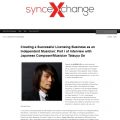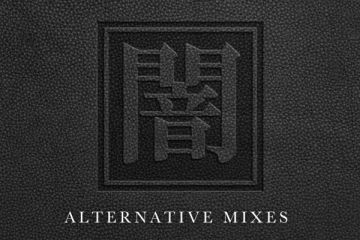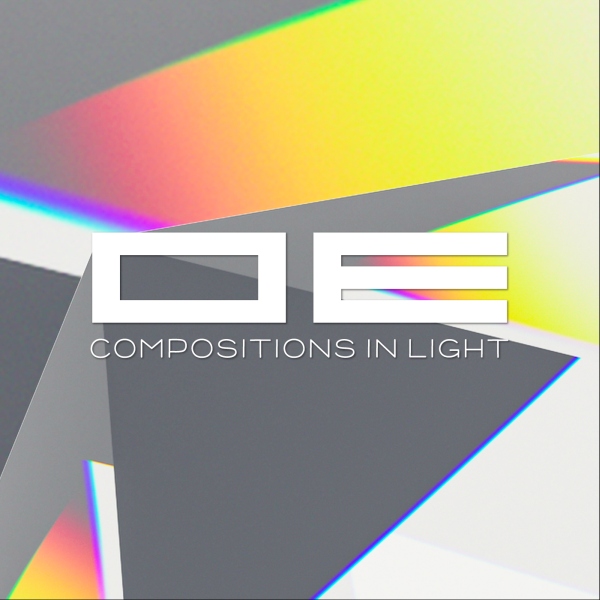Note: I tweaked my blog, which was posted on my label website in October 2011, to share its insights with a broader audience.
Contents
In the last post, I wrote that JASRAC basically covers Synchronization Rights as well as other publishing rights, as opposed to ASCAP, BMI, and SESAC, which focus on Performance Rights, and Harry Fox, which focuses on Mechanical Rights. This time, I’ll explain how JASRAC defines and covers these rights. I hope this helps you understand our domestic situation around the licensing and publishing business, especially if you’re a non-Japanese publisher or composer who is looking for sub-publishers in Japan.
How JASRAC defines and covers the publishing rights
JASRAC issues a brochure called “Guide to the Copyright Trust Contract and Membership (English edition, you can download the PDF on the “Membership Requirement” page)” where you can see not only what kind of copyrights JASRAC covers but also how these rights are handled in the day-to-day music business in Japan. In chapter 3, “Choices in the Extent of Trust of Rights,” there is a chart describing categories of rights and actual utilization forms. I re-visualized and added a few words to the chart for your better understanding, but its basic structure remains the same.
Note: Note: Be sure to check the latest brochure to confirm how they categorize music copyrights now.
“Basically, JASRAC is entrusted with and administers any and all copyrights owned and to be owned by Trustor. However, Trustor may exclude a part of his/her copyrights from the ones entrusted to JASRAC. Trustor may exclude his/her rights from JASRAC’s administration in accordance with the classification of categories of rights or utilization forms shown below. Please note that Trustor CANNOT exclude on a per work basis.”

Definition and Dimension of Mechanical Rights in Japan
You might have noticed something different if you have been familiar with the categorization/definition of copyrights in the US. Yes, Mechanical Rights in this chart are different from what you usually think of. As you can see in supplemental remarks below the chart, JASRAC apparently defines Mechanical as including the (so-called) Synchronization usages such as 5) to 8), which is as contrasted with the general definition that Mechanical Rights should be regarded as different or separated from Synchronization Rights (or vice versa).
To quote Harry Fox Agency’s definition, a mechanical license “grants the rights to reproduce and distribute copyrighted musical compositions (songs) on phonorecords (i.e., CDs, records, tapes, and certain digital configurations).” As it says, the term Mechanical is usually related to the reproduction and distribution of PHYSICAL/DIGITAL MEDIA (format, container) such as CDs, DVDs, digital files, etc.
Indeed, we could understand the usages 5) to 8) from the point of view of MEDIA on which the musical compositions were recorded/reproduced/distributed. But then, where can we find the Synchronization Rights? Don’t they particularly distinguish usages of music being “synchronized with visual images” from other “music alone” usages? Does it mean they care only about “on what media” the music compositions work, not “how”?
Mechanical Rights = Recording Rights?
Mechanical Rights = Recording Rights?
Let’s consider the normal definition, which is widespread in the international music/media industries. It seems that THEIR Mechanical could be paraphrased to a broader term such as “Recording Rights” (though we actually don’t use that ambiguous word) or could be elaborated separately as “Mechanical Rights and Synchronization Rights.”
Eventually, THEIR Mechanical Rights encompass all the rights related to ANY action or circumstance that occurs when you ‘record/re-record/render/reproduce/duplicate/distribute copyrighted musical compositions (not Master/audio data) mechanically ON/WITH ANY medium.’ It’s crucial to note that this is entirely independent of whether the music is used in sync with visual images or not.
My interpretation of JASRAC’s chart
Keeping these in mind, I made my own interpretation version of this chart to avoid the ambiguity of these terms and bring them close to our familiar definition. As this chart includes unofficial interpretations just for readers’ better understanding, JASRAC has no liability for the legitimacy of this interpretation.

Since JASRAC actually can administrate all these copyrights together, how I interpret or factorize THEIR Mechanical Rights on the chart wouldn’t affect any of our day-to-day (domestic, NOT international) business AS LONG AS you entrust all copyrights to JASRAC. However, what you might as well remember at the same time is their original chart also implies that JASRAC and most Japanese publishers don’t necessarily handle Mechanical and Synchronization Rights strictly separately or independently like the US publishers and PROs usually do.
To elaborate more, I’ll show you another quote from the brochure.
“The following alternatives are not allowed:
– If a Trustor does not entrust JASRAC with 2) Mechanical Rights, he/she cannot entrust the utilization forms 5) to 8) to JASRAC.
– If a Trustor does not entrust JASRAC with both 1) Performing Rights and 2) Mechanical Rights, he/she cannot entrust the utilization forms 5) to 11) to JASRAC.”
You’ll understand what this means immediately. You may exclude and self-administrate Sync Rights as occasion demands. But if you want them to administrate Sync Rights, you have to entrust them with (normal) Mechanical Rights as well (This stipulation could be similar to the one HFA used to have before, according to their description about Synchronization).
Are Sync Rights subordinated to Mechanical Rights in Japan?
We could say that Sync Rights seem to be regarded as being almost subordinate to Mechanical rights. Such a way of thinking looks container-oriented rather than content-oriented, but it might be inevitable if we consider the fact there have been much fewer actual occasions when publishers have to negotiate directly with users, as compared with the US. As I mentioned before, I wouldn’t argue which is better because in reality, it has worked well within Japan and both have pros and cons.
Lastly, I’d like to stress that JASRAC’s classification of copyrights and way of copyright administration apply ONLY to DOMESTIC/INTERNAL operations and do NOT affect INTERNATIONAL/EXTERNAL Sync-licensing operations. Regarding our international sync-license, please refer to our Tutorial page.
I hope this helps. If you have general questions about copyright administration in Japan, please contact JASRAC. Questions regarding my interpretation of this post, however, should be directed to to us.






 What are the Numbers Game and Waiting Game? Talk about how t
What are the Numbers Game and Waiting Game? Talk about how t  My personal story of bootstrapping an independent music labe
My personal story of bootstrapping an independent music labe  The album "Anti-Crime Breaks" features robust and
The album "Anti-Crime Breaks" features robust and  Exploring the power of prolific creation through artists lik
Exploring the power of prolific creation through artists lik  Here is the making of Dark Model’s new track "Rage and
Here is the making of Dark Model’s new track "Rage and  Zero in on Now “Moment of Now,” the fifth album of OE’s Zen-
Zero in on Now “Moment of Now,” the fifth album of OE’s Zen-  Uncover the ‘Hidden Best Album’—packed with fresh, surprisin
Uncover the ‘Hidden Best Album’—packed with fresh, surprisin  We just have created our Spotify profile, which has many pla
We just have created our Spotify profile, which has many pla  The 8th release under the MER moniker by Tatsuya Oe (Captain
The 8th release under the MER moniker by Tatsuya Oe (Captain  Minimalism and grooves weave the interplay of light and shad
Minimalism and grooves weave the interplay of light and shad